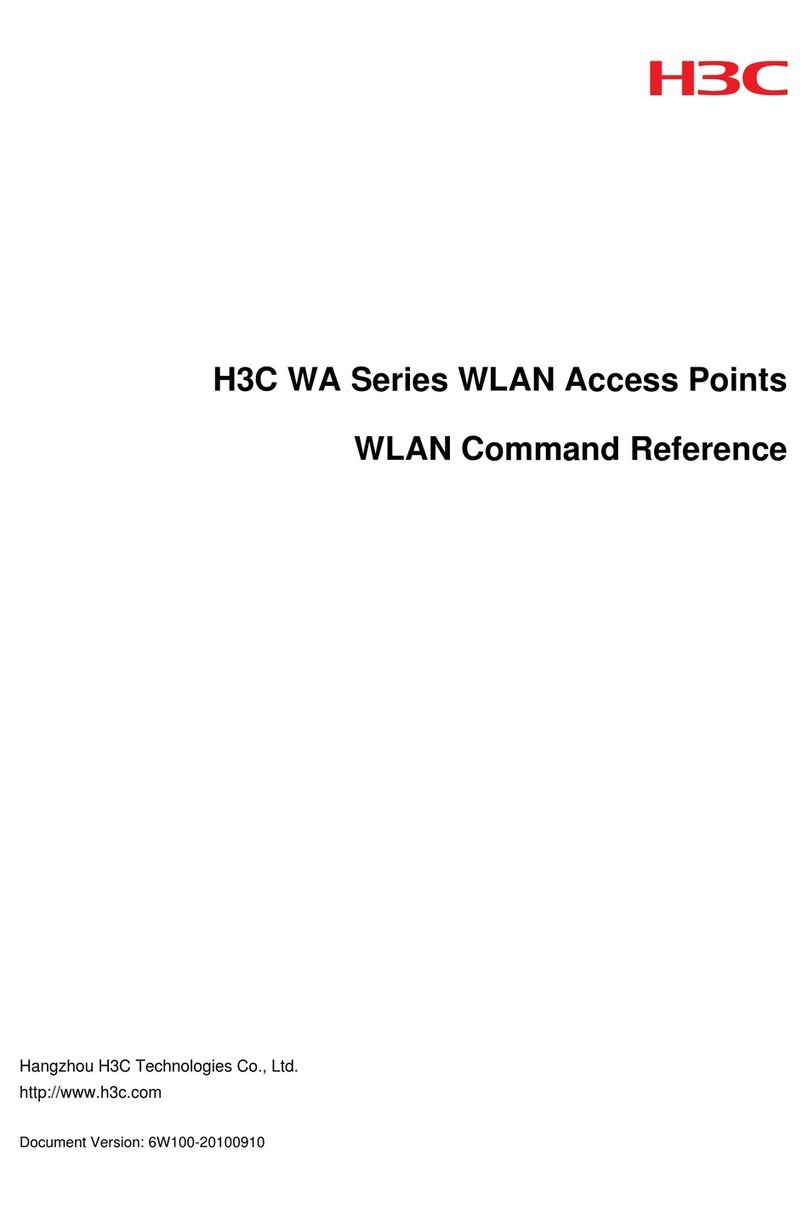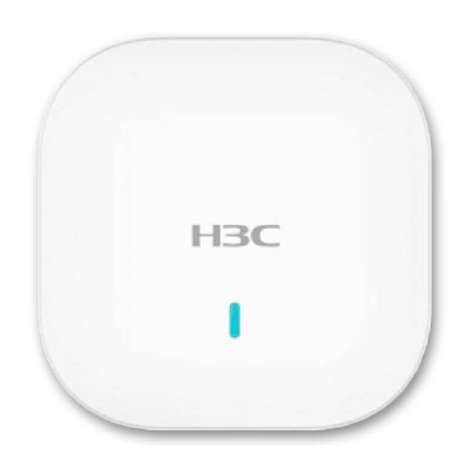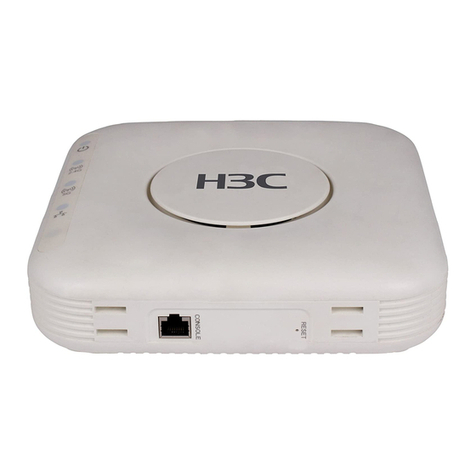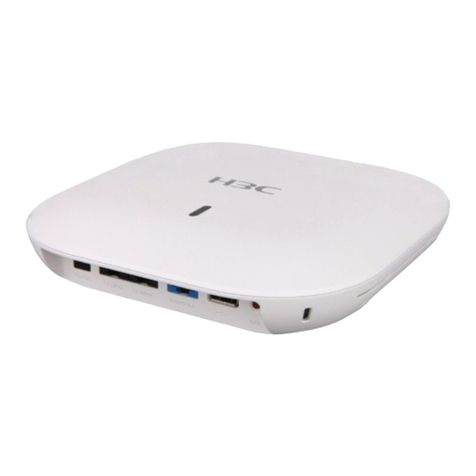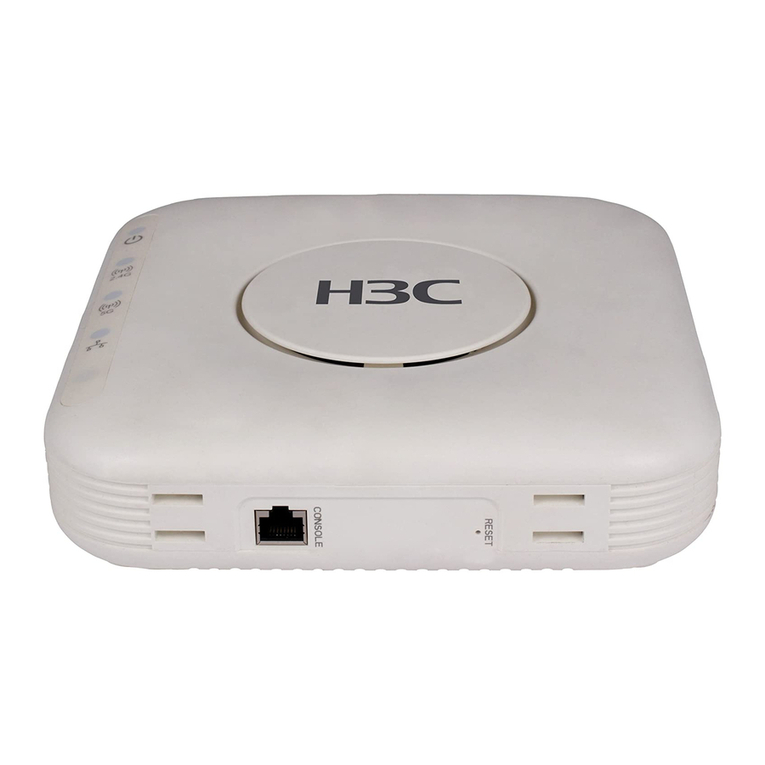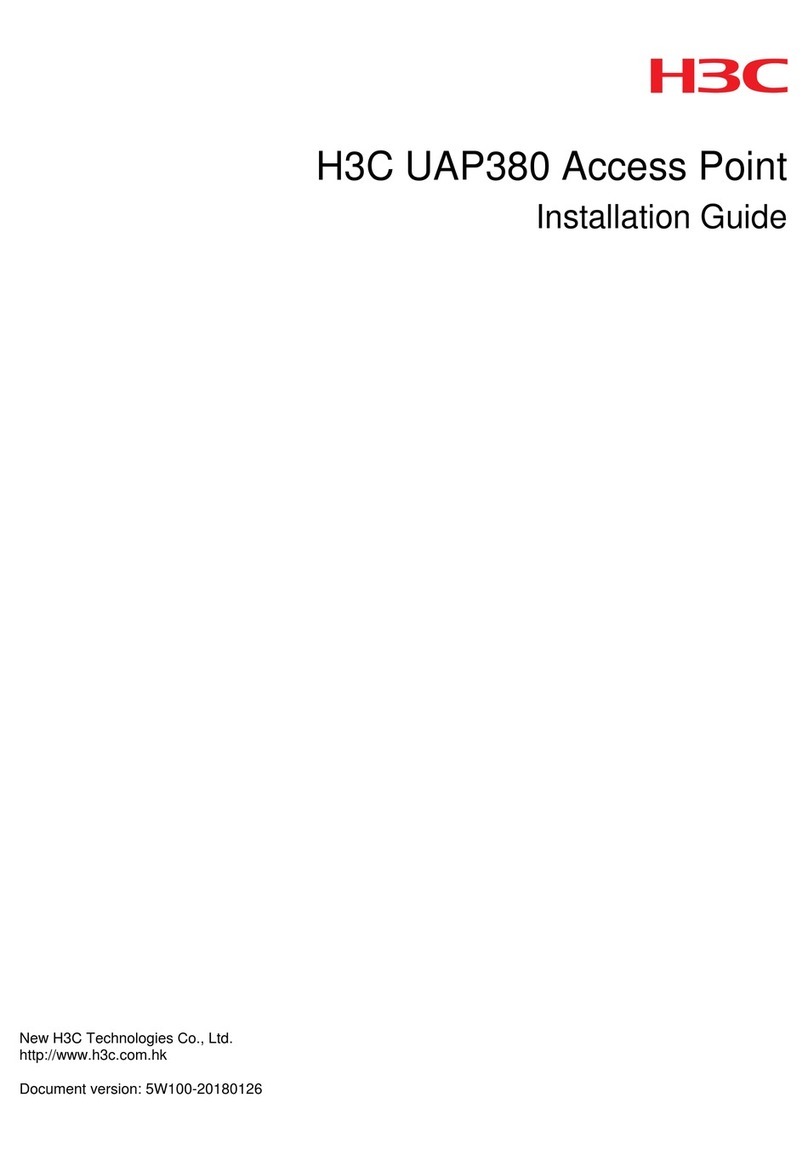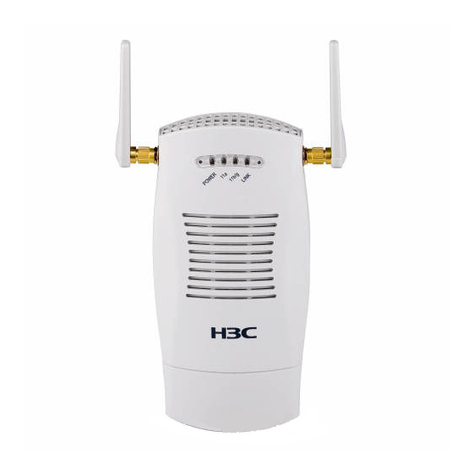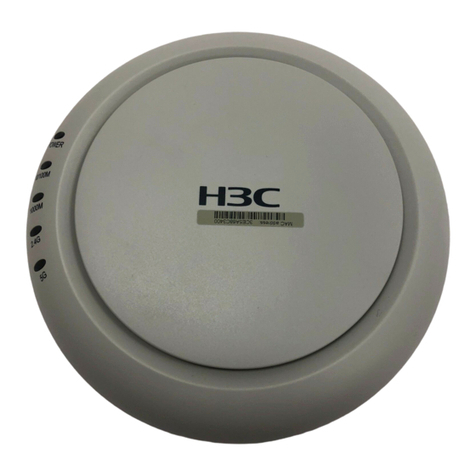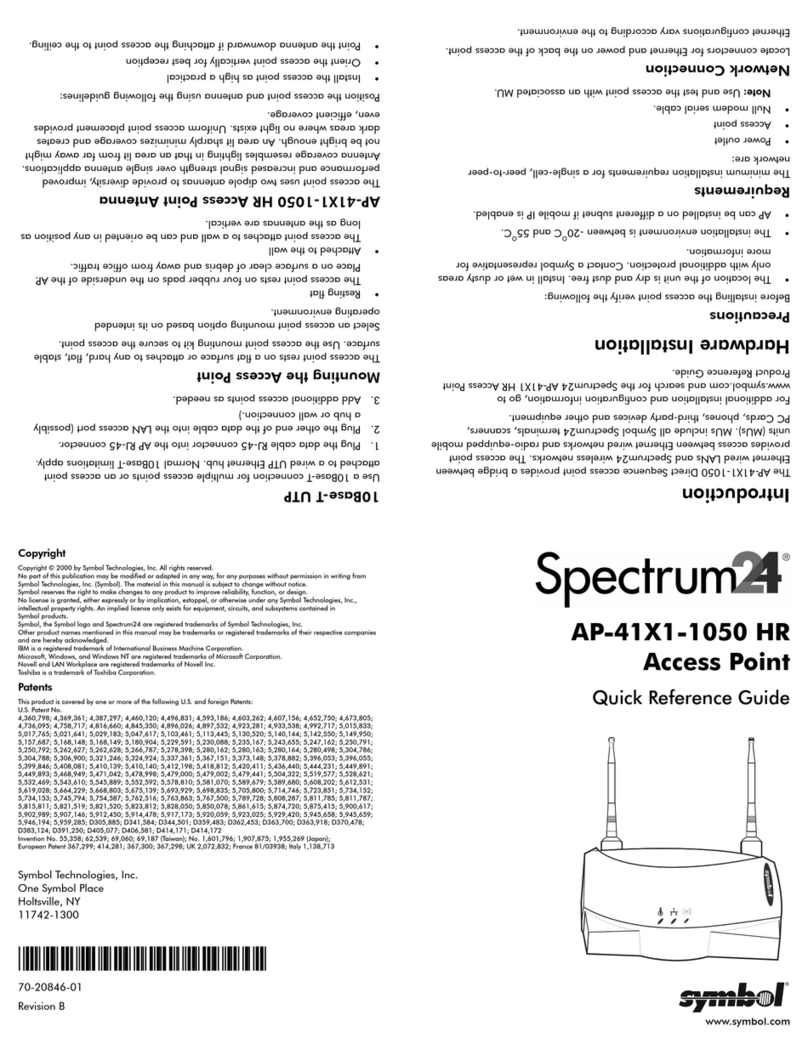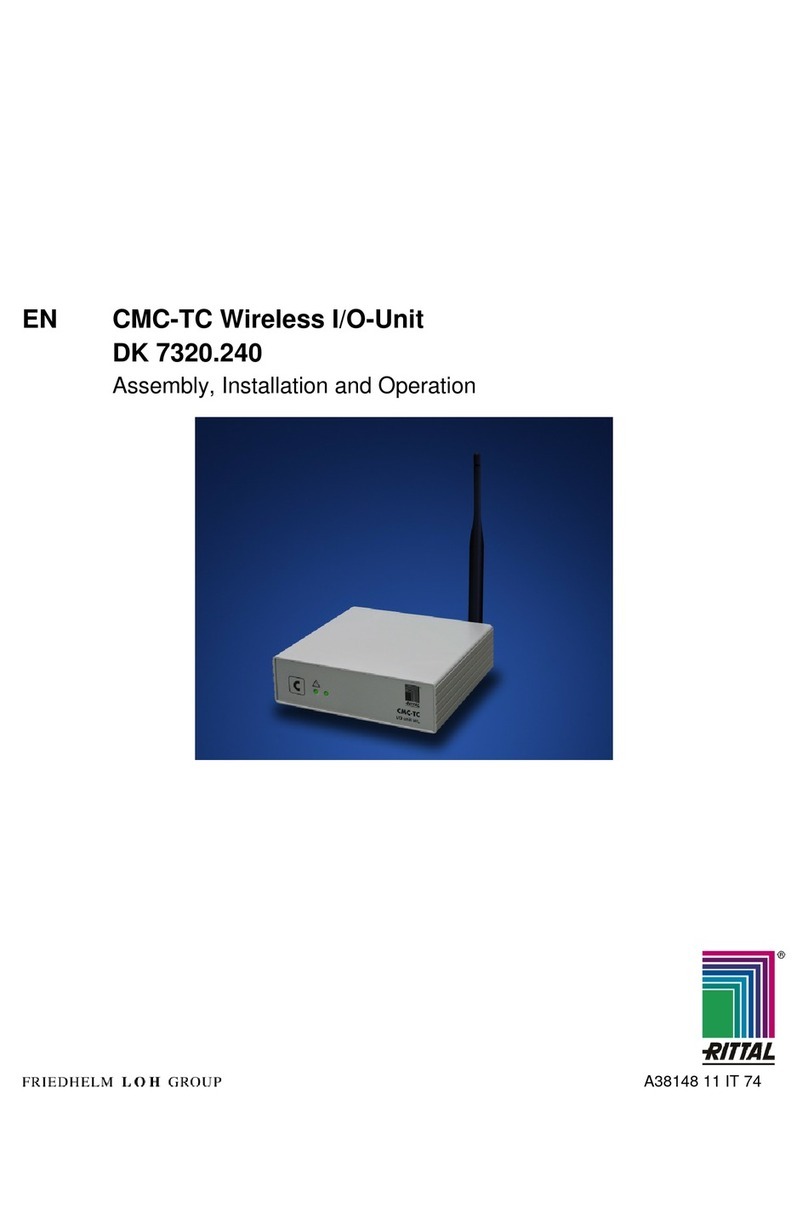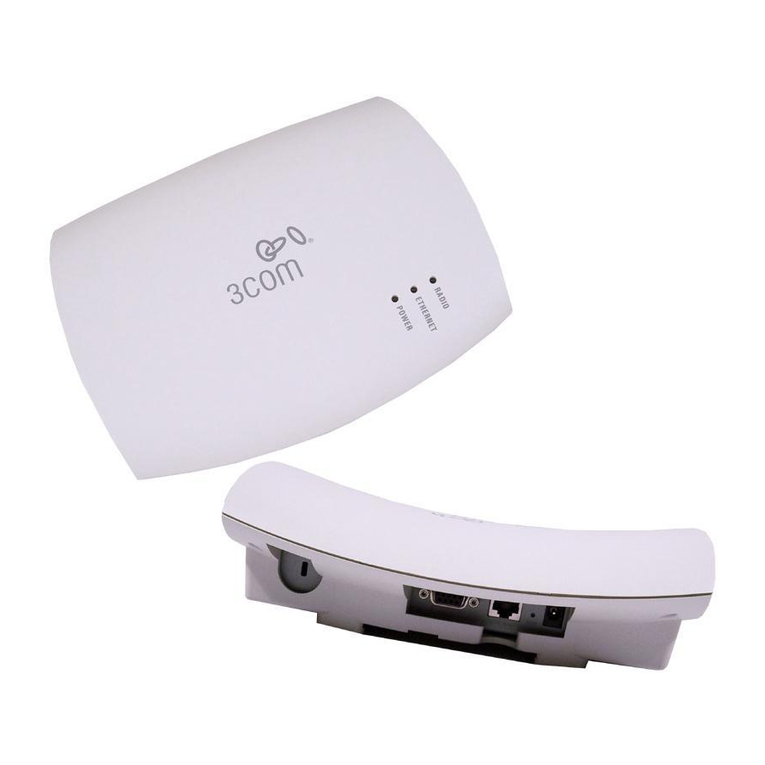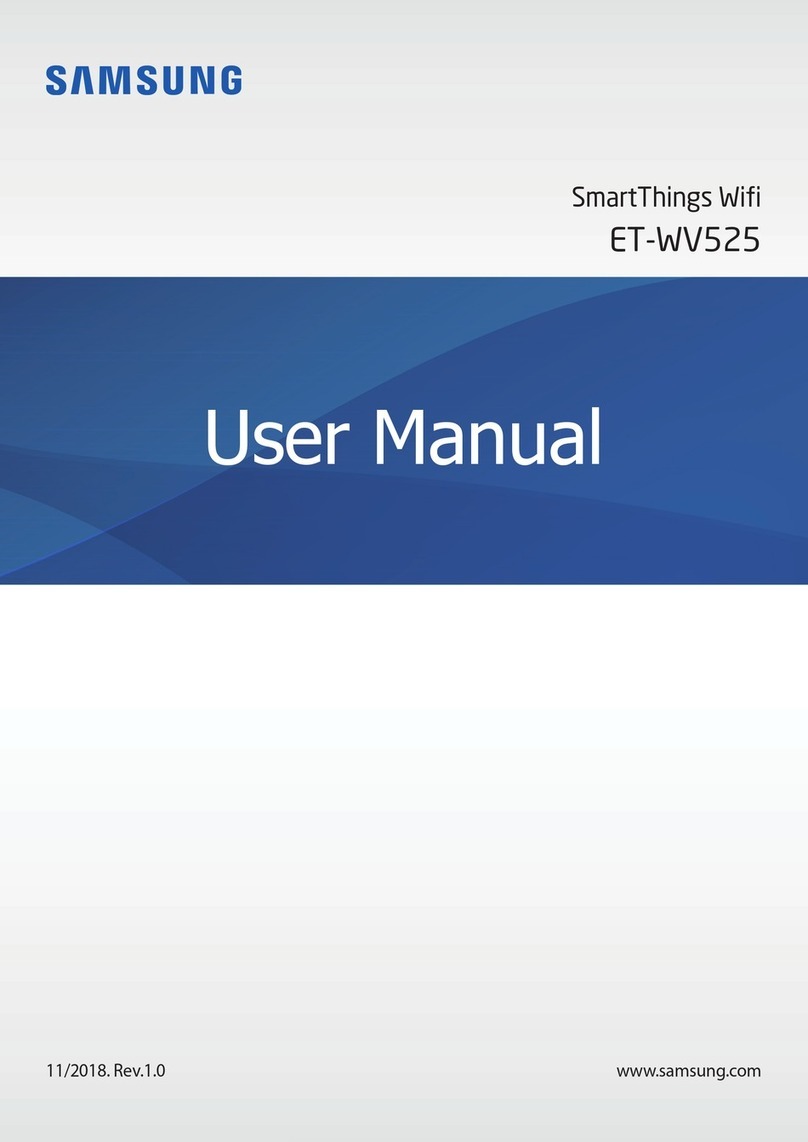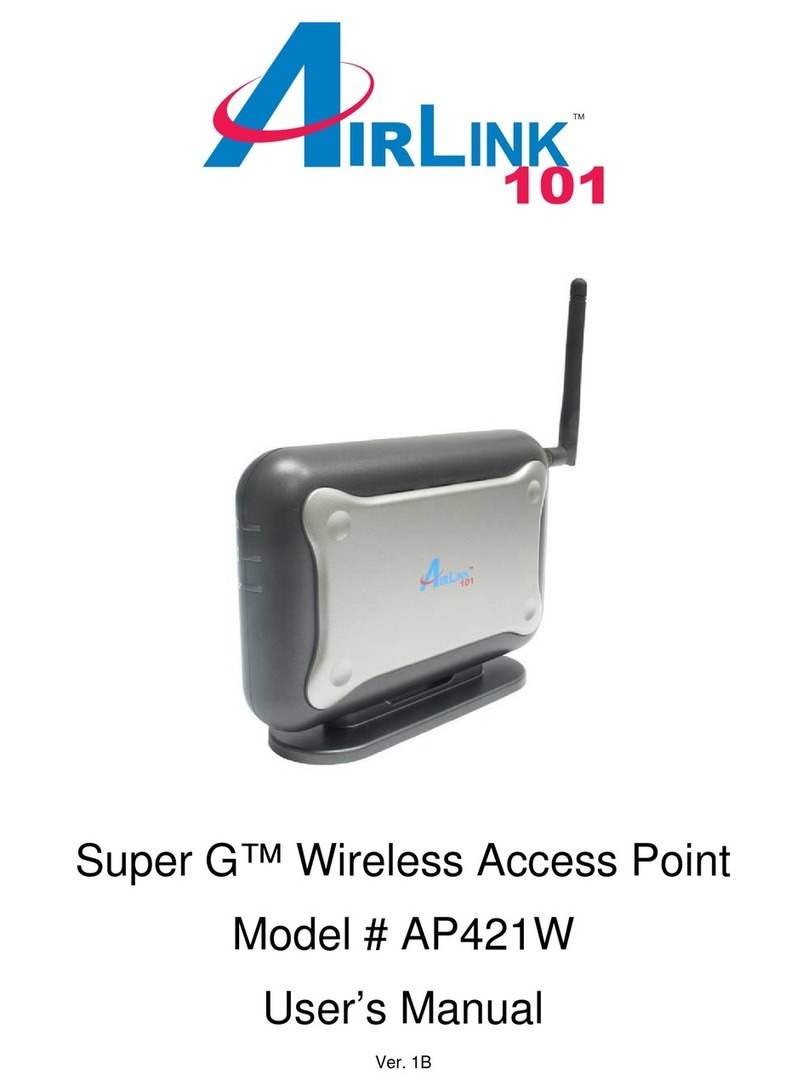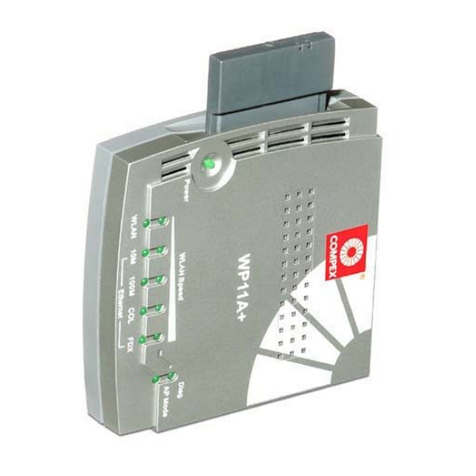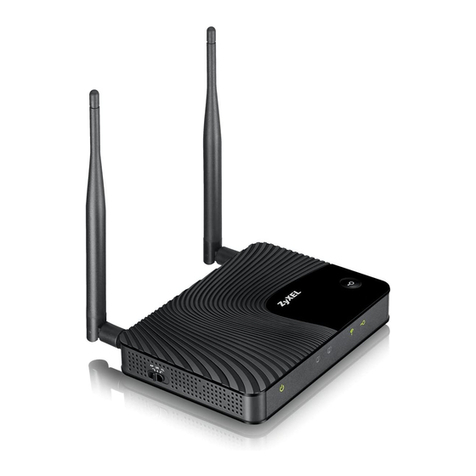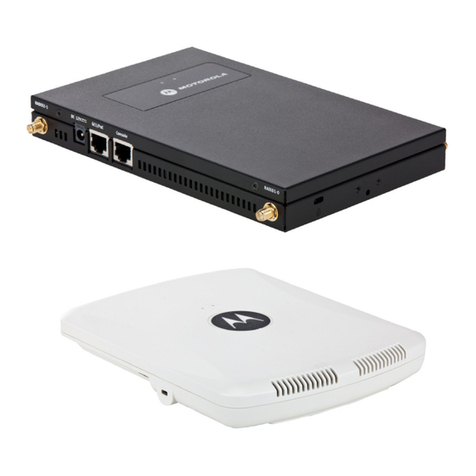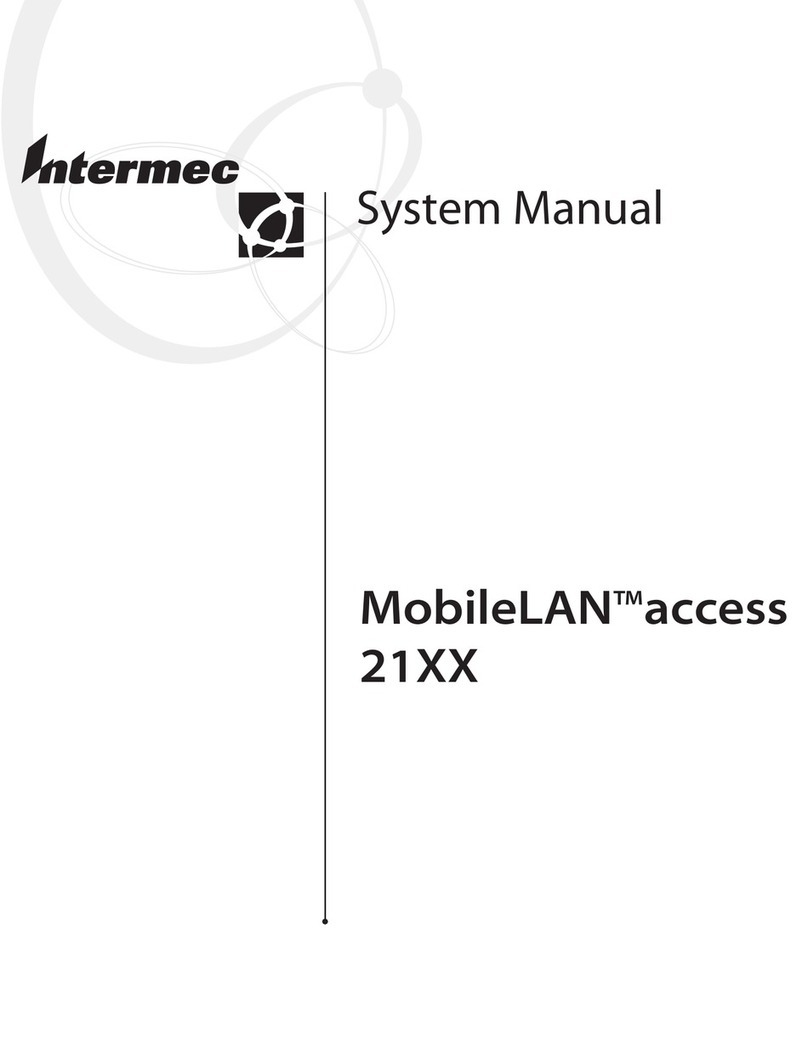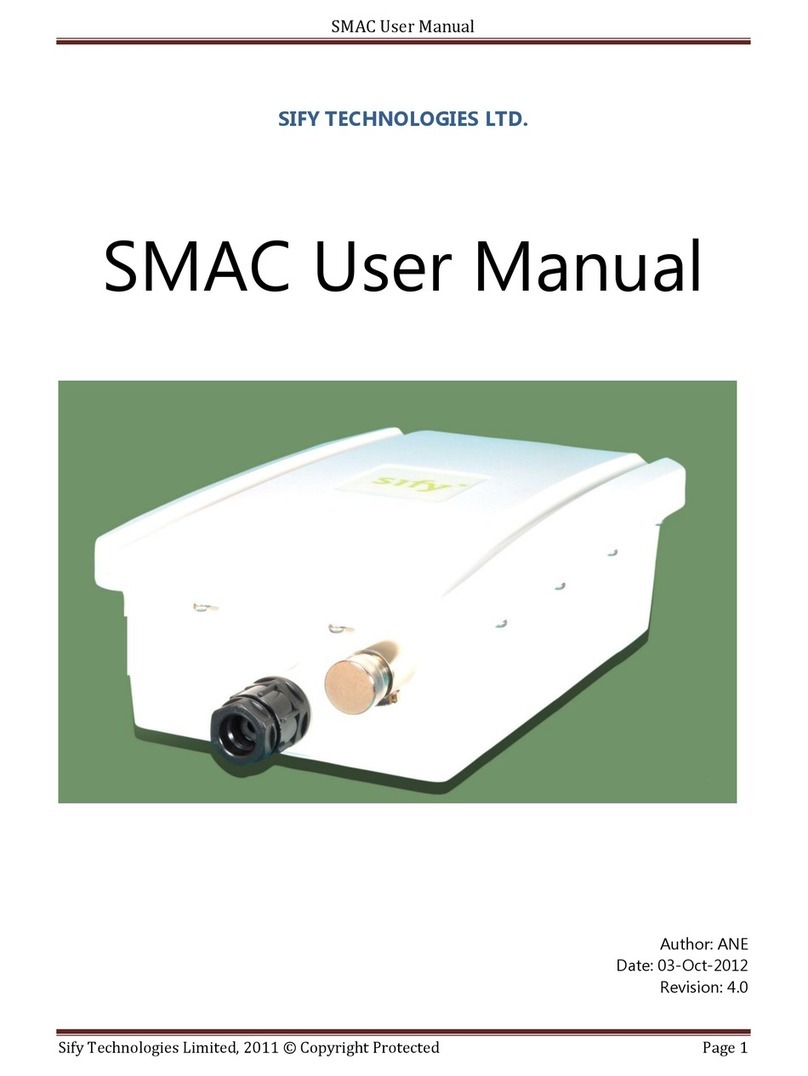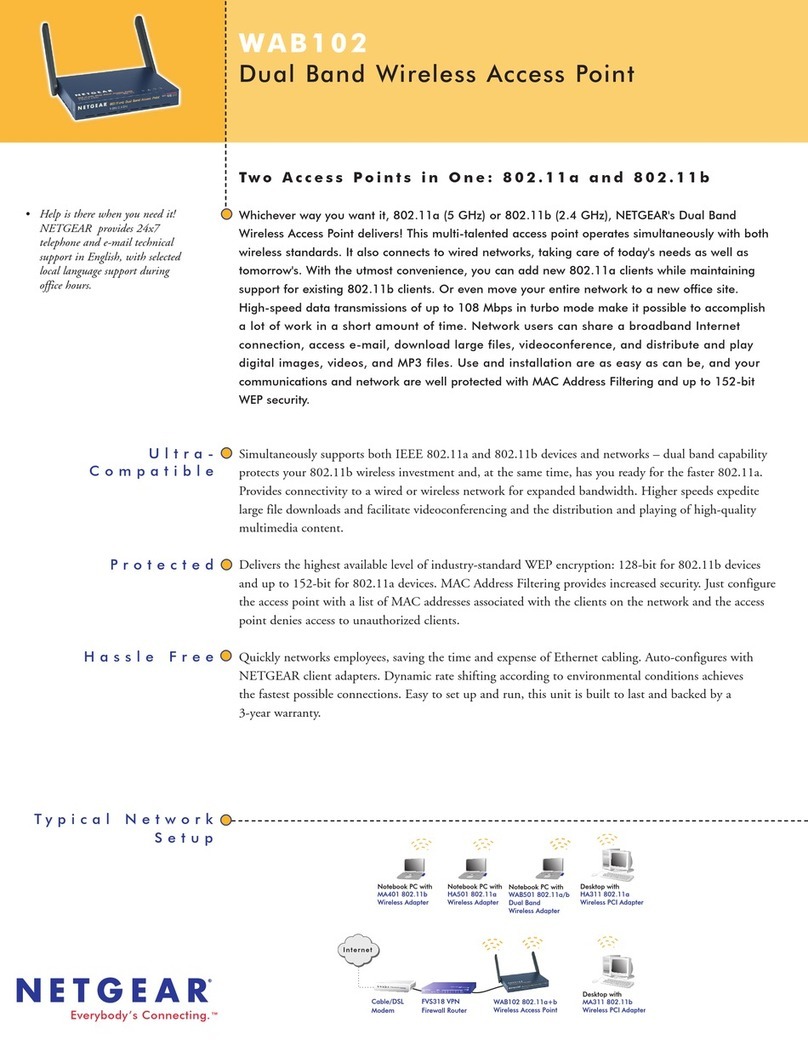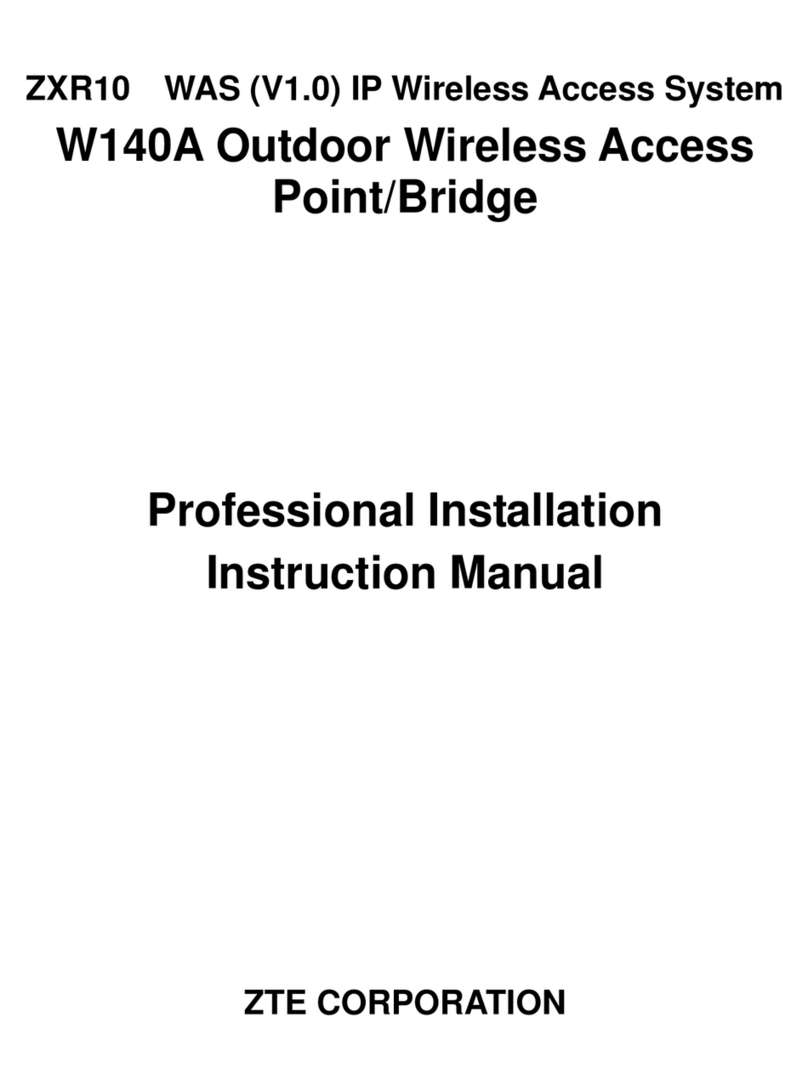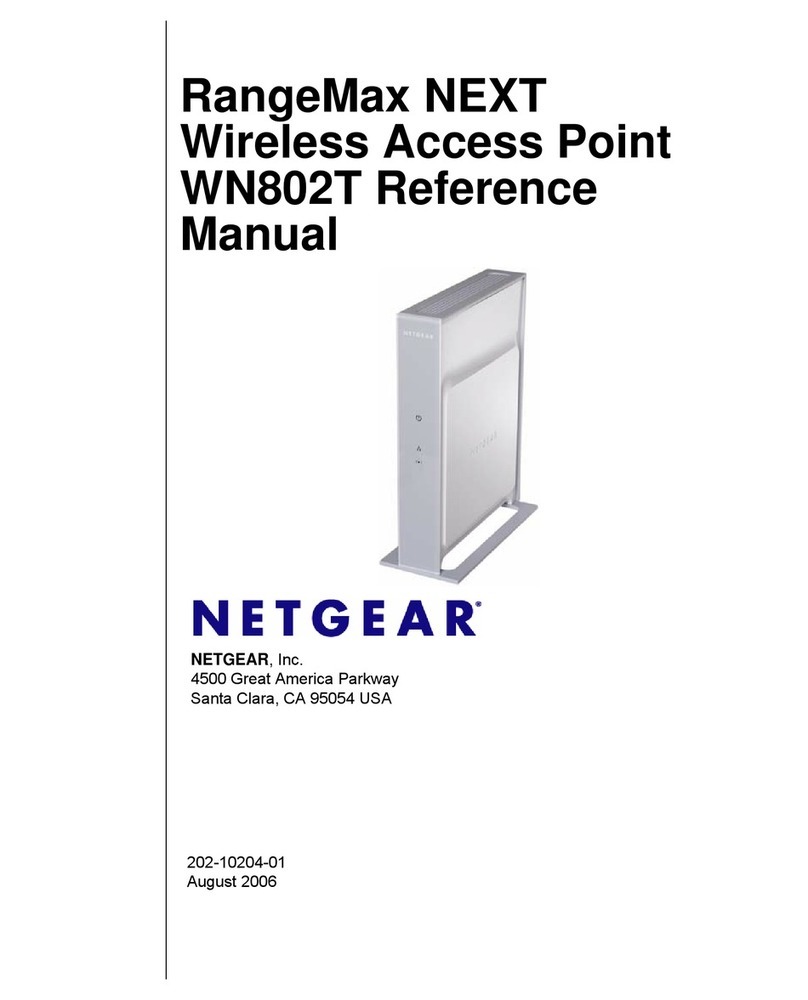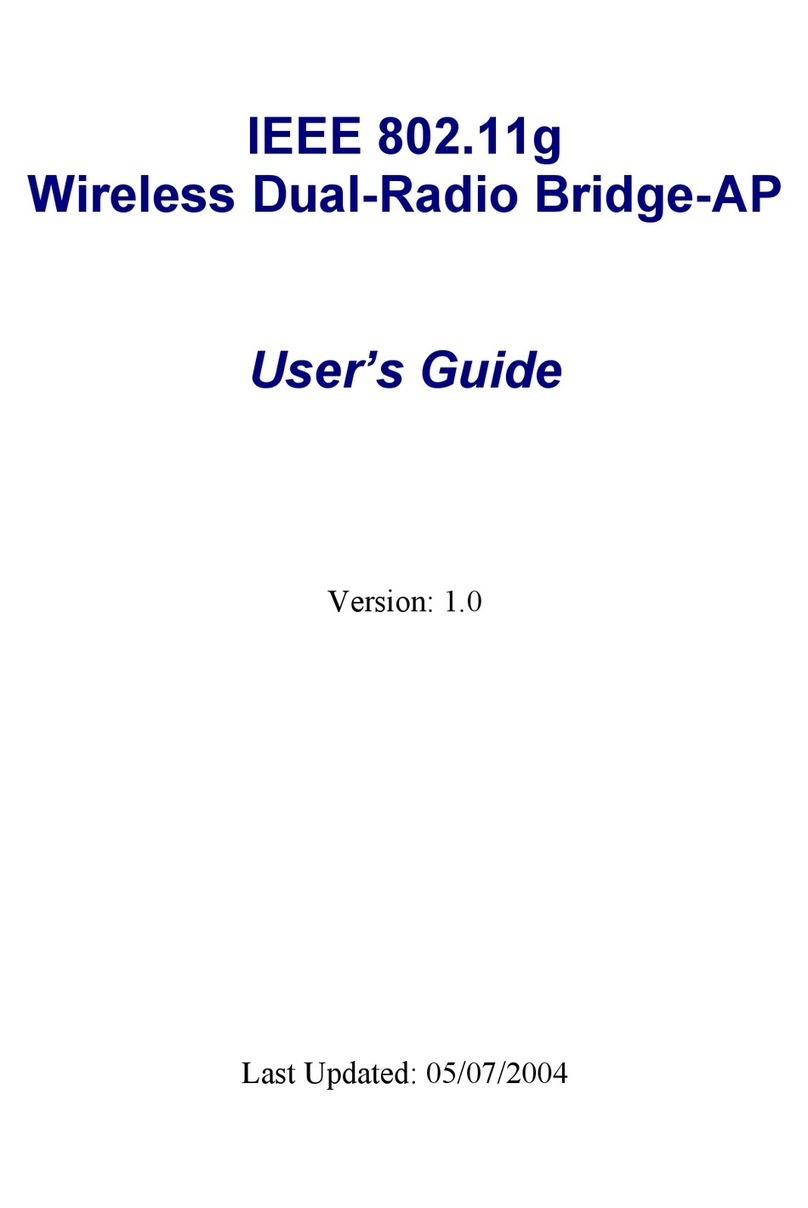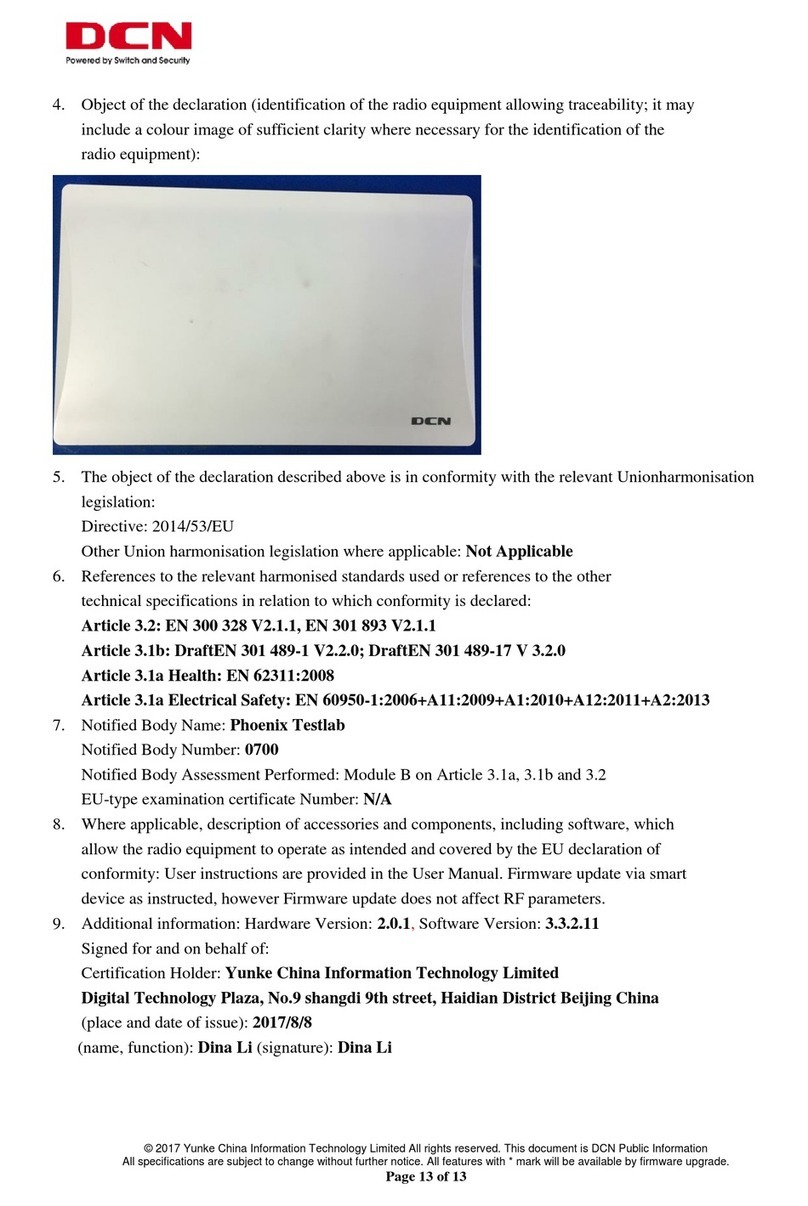H3C WA6320 User manual

H3C WA6320 Access Point
Installation Guide
New H3C Technologies Co., Ltd.
http://www.h3c.com
Document version: 5W100-20200224

Copyright © 2020, New H3C Technologies Co., Ltd. and its licensors
All rights reserved
No part of this manual may be reproduced or transmitted in any form or by any means without prior written
consent of New H3C Technologies Co., Ltd.
Trademarks
Except for the trademarks of New H3C Technologies Co., Ltd., any trademarks that may be mentioned in this
document are the property of their respective owners.
Notice
The information in this document is subject to change without notice. All contents in this document, including
statements, information, and recommendations, are believed to be accurate, but they are presented without
warranty of any kind, express or implied. H3C shall not be liable for technical or editorial errors or omissions
contained herein.
Environmental protection
This product has been designed to comply with the environmental protection requirements. The storage, use,
and disposal of this product must meet the applicable national laws and regulations.

Preface
This installation guide describes the installation procedure for the H3C WA6320 access point.
This preface includes the following topics about the documentation:
•
Audience.
•
Conventions.
•
Documentation feedback.
Audience
This documentation is intended for:
•
Network planners.
•
Field technical support and servicing engineers.
•
Network administrators working with the WA6320 access point.
Conventions
The following information describes the conventions used in the documentation.
Command conventions
Convention
Description
Boldface Bold text represents commands and keywords that you enter literally as shown.
Italic Italic text represents arguments that you replace with actual values.
[ ] Square brackets enclose syntax choices (keywords or arguments) that are optional.
{ x | y | ... }
Braces enclose a set of required syntax choices separated by vertical bars, from which
you select one.
[ x | y | ... ]
Square brackets enclose a set of optional syntax choices separated by vertical bars,
from which you select one or none.
{ x | y | ... } *
Asterisk marked braces enclose a set of required syntax choices separated by vertical
bars, from which you select a minimum of one.
[ x | y | ... ] *
Asterisk marked square brackets enclose optional syntaxchoices separated byvertical
bars, from which you select one choice, multiple choices, or none.
&<1-n> The argument or keyword and argument combination before the ampersand (&) sign
can be entered 1 to n times.
# A line that starts with a pound (#) sign is comments.
GUI conventions
Convention
Description
Boldface Window names, button names, field names, and menu items are in Boldface. For
example, the New User window opens; click OK.
> Multi-level menus are separated by angle brackets. For example, File > Create >
Folder.

Symbols
Convention
Description
WARNING!
An alert that calls attention to important information that if not understood or followed
can result in personal injury.
CAUTION:
An alert that calls attention to important information that if not understood or followed
can result in data loss, data corruption, or damage to hardware or software.
IMPORTANT:
An alert that calls attention to essential information.
NOTE:
An alert that contains additional or supplementary information.
TIP:
An alert that provides helpful information.
Network topology icons
Convention
Description
Represents a generic network device, such as a router, switch, or firewall.
Represents a routing-capable device, such as a router or Layer 3 switch.
Represents a generic switch, such as a Layer 2 or Layer 3 switch, or a router that
supports Layer 2 forwarding and other Layer 2 features.
Represents an access controller, a unified wired-WLAN module, or the access
controller engine on a unified wired-WLAN switch.
Represents an access point.
Represents a wireless terminator unit.
Represents a wireless terminator.
Represents a mesh access point.
Represents omnidirectional signals.
Represents directional signals.
Represents a security product, such as a firewall, UTM, multiservice security
gateway, or load balancing device.
Represents a security module, such as a firewall, load balancing, NetStream, SSL
VPN, IPS, or ACG module.
Examples provided in this document
Examples in this document might use devices that differ from your device in hardware model,
configuration, or software version. It is normal that the port numbers, sample output, screenshots,
and other information in the examples differ from what you have on your device.
T
T
T
T

Documentation feedback
You can e-mail your comments about product documentation to info@h3c.com.
We appreciate your comments.

i
Contents
1 Preparing for installation··········································································1-1
Safety recommendations ································································································································1-1
Site preparation···············································································································································1-1
Installation accessories···································································································································1-1
Installation tools ··············································································································································1-2
2 Installing the AP·······················································································2-1
Installation flowchart········································································································································2-1
Pre-installation tasks·······································································································································2-1
Determining the installation position ···············································································································2-2
Mounting the AP··············································································································································2-2
Mounting bracket·····································································································································2-2
Mounting the AP on a wall ······················································································································2-2
Mounting the AP on a ceiling ··················································································································2-5
Connecting the AP to a power source ············································································································2-7
Connecting a PoE power source·············································································································2-7
Connecting a local power source············································································································2-7
Check after power-on······························································································································2-8
Connecting the AP to the network···················································································································2-8
3 Appendix A Technical specifications························································3-1
4 Appendix B Ports and LEDs ····································································4-1
Ports································································································································································4-1
LEDs ·······························································································································································4-2

1-1
1 Preparing for installation
Safety recommendations
WARNING!
Only
professional technical personnel can install and remove the AP and its
accessories. You must
read all safety instructions carefully before working with the AP.
To avoid possible bodily injury and equipment damage, read the following safety recommendations
before installing the AP. Note that the recommendations do not cover every possible hazardous
condition.
•
To avoid bodily injury and device damage, take adequate safety measures.
•
Place the AP in a dry and flat location and take anti-slip measures.
•
Keep the AP clean and dust-free.
•
Do not place the AP in a moist area and avoid liquid intrusion.
•
Keep the AP and installation tools away from walkways.
Site preparation
Before installing the AP, examine the installation site and make sure the AP will operate in a
favorable environment. Make sure the temperature and humidity at the installation site meet the
requirements in Table 1-1.
Table 1-1 Temperature and humidity requirements
Item
Specification
Operating temperature -10°C to 55°C (32°F to 113°F)
Storage temperature –40°C to +70°C (–40°F to +158°F)
Operating humidity 5% RH to 95% RH, noncondensing
Installation accessories
Figure 1-1 Accessories provided with the AP

1-2
Installation tools
When installing the AP, you might need the following tools. Prepare the installation tools yourself as
required.
Figure 1-2 Installation tools

2-1
2 Installing the AP
Installation flowchart
Figure 2-1 Installation flowchart
Pre-installation tasks
Before installing the AP, perform the following tasks:
•
Connect the AP to a power source and the network. Examine the LEDs to verify that the AP is
operating correctly. For information about AP LEDs, see "LEDs."
•
Record the MAC address and serial number at the rear of the AP for future use.
•
Make sure you have completed cabling at the installation site.
Start
Complete pre-installation
tasks
Determine the installation
position
Mount the AP
On a wall On a ceiling
Connect the AP to the
power source
Connect the AP to the
network
End

2-2
Determining the installation position
Determine the installation position by observing the following principles:
•
Few obstacles such as wall exist between the AP and clients.
•
The AP is far away from electronic devices (such as microwave oven) that might generate
radio frequency (RF) noise.
•
The AP does not hinder people’s daily work and life.
•
The place is not water seeping, water soaking, and condensing.
Mounting the AP
IMPORTANT:
•
Before mounting the AP on a wall or ceiling, connect cables to the AP.
•Install an M3 × 23.5 security screw as required.
The AP can be installed only indoors. You can mount the AP on a wall or a ceiling.
Mounting bracket
Figure 2-2 Mounting bracket
(1) Installation hole for securing the mounting bracket to a wall or ceiling (point A)
(2) T-rail installation hole (reserved) (Point B)
(3) Auxiliary hole for securing cables by using cable tie (point C)
(4) Security hole for an M3 × 23.5 security screw
Mounting the AP on a wall
1. Place the mounting bracket against the wall and mark the installation holes on the wall.

2-3
Figure 2-3 Marking the installation holes on the wall
2. Drill three holes with a diameter of 6 mm (0.24 in) and a depth of 30 mm (1.18 in) at the
marked locations, as shown in Figure 2-4.
Figure 2-4 Drilling holes in the wall
3. Insert a screw anchor into each hole, and tap the screw anchor with a rubber hammer until it is
all flush with the wall surface, as shown in Figure 2-5.
Figure 2-5 Hammering the screw anchor into the wall
4. Thread the M3 × 23.5 security screw through the security hole in the mounting bracket. Make
sure the screw does not block the keyhole slot.

2-4
Figure 2-6 Inserting the security screw
5. Insert the screws through the installation holes in the mounting bracket into the holes in the
wall. Fasten the screws to secure the mounting bracket to the wall, as shown in Figure 2-7.
Figure 2-7 Attaching the mounting bracket to the wall
6. Position the four pegs at the AP rear into the keyhole slots in the mounting bracket and then
slide the AP down until it clicks into place, as shown in Figure 2-8.
Figure 2-8 Attaching the AP to the mounting bracket
7. Use a security Torx screwdriver to fasten the M3 × 23.5 security screw.

2-5
Figure 2-9 Fastening the M3 × 23.5 security screw
Mounting the AP on a ceiling
CAUTION:
The ceiling for installing the AP must be less than 18 mm (0.71 in) in thickness, and can bear a load
of 5 kg (11.02 lb).
If you must install the AP on a ceiling not strong enough, use boards to
reinforce
the ceiling.
The installation method for the M3 × 23.5 security screw is similar when the AP is mounted on the
wall and on the ceiling.
To mount the AP on a ceiling:
1. Remove the ceiling tile.
2. Place the mounting bracket against the ceiling tile and mark the installation holes on the ceiling
tile. Drill three holes with a diameter of 6 mm (0.24 in) at the marked positions, as shown in
Figure 2-10.
Figure 2-10 Drilling holes in the ceiling tile
3. Thread the pan-head screws through the installation holes in the mounting bracket and into the
holes in the ceiling tile. Fasten washers and nuts at the other side of the ceiling to secure the
mounting bracket to the ceiling, as shown in Figure 2-11.

2-6
Figure 2-11 Attaching the mounting bracket to the ceiling
4. Connect a cable to the AP:
a. If you are not to use a cable tie, directly connect the cable to the AP.
b. To use a cable tie, thread the cable tie through the auxiliary hole in the mounting bracket,
and do not tighten the cable tie. Then, connect a cable to the AP, adjust the cable length,
and then tighten the cable tie to secure the cable to the AP.
No cable tie is provided with the AP. Prepare one yourself as required.
Figure 2-12 Securing a cable
5. Position the four pegs at the AP rear into the keyhole slots in the mounting bracket and slide
the AP until it clicks into place, as shown in Figure 2-13.
Figure 2-13 Attaching the AP to the mounting bracket

2-7
6. Verify that the AP is securely installed to prevent it from falling off.
Connecting the AP to a power source
You can supply power to the AP by using a local power source or through 802.3af PoE as required.
Before powering the AP, make sure the local power source or the power sourcing equipment (PSE)
is reliably grounded.
Connecting a PoE power source
CAUTION:
The AP is to be connected only to PoE networks without routing to the outside plant.
To power the AP through PoE, use an Ethernet cable to connect an Ethernet port on a PoE switch to
the GE/PoE port on the AP.
Figure 2-14 Powering the AP through PoE
Connecting a local power source
You can use an AC/DC power adapter to connect the AP to a local power source. No power adapter
is provided with the AP. Prepare one yourself as required. Table 2-1 describes the power adapter
specifications.
Table 2-1 Power adapter specifications
Item
Specification
Input 100 VAC to 240 VAC
Output +54 VDC at 0.74 A
Figure 2-15 Using a power adapter to connect the AP to a local power source

2-8
Check after power-on
Examine the LEDs on the AP after you power on it to verify that the AP is operating correctly. For
more information about the LEDs, see "LEDs."
Connecting the AP to the network
All AP settings are configured on the AC. To verify network connectivity of the AP, execute the
display wlan ap all command on the AC. If the AP status is R/M, the AP has been connected
to the network.
<Sysname> display wlan ap all
Total number of APs: 1
Total number of connected APs: 1
Total number of connected manual APs: 1
Total number of connected auto APs: 0
Total number of connected common APs: 1
Total number of connected WTUs: 0
Total number of inside APs: 0
Maximum supported APs: 3072
Remaining APs: 3071
Total AP licenses: 128
Remaining AP licenses: 127
AP information
State : I = Idle, J = Join, JA = JoinAck, IL = ImageLoad
C = Config, DC = DataCheck, R = Run M = Master, B = Backup
AP name APID State Model Serial ID
ap1 1 R/MWA6320 219801A28N819CE0002T

3-1
3 Appendix A Technical specifications
Table 3-1 Technical specifications
Item
Specification
Dimensions (H × W × D) 185 × 185 × 33 mm (7.28 × 7.28 × 1.30 in)
Weight 423 g (14.92 oz)
Antenna Built-in antenna
Power consumption ≤ 12.42 W
Protocol
•802.11b/g/a/n/ac/ax
•802.3af
•Dual-frequency

4-1
4 Appendix B Ports and LEDs
Ports
The AP provides the following ports:
•
One console port
•
One GE/PoE port
•
One power port
It provides also a reset button and a security screw hole.
Figure 4-1 Ports on the AP
(1) Power port
(2) 10/100/1000M Ethernet copper port
(3) Console port
(4) Reset button
Table 4-1 Port descriptions
Port Standards and
protocols
Description
Console port RS/EIA-232 Used by technical personnel only for device
configuration and management.
10/100/1000M Ethernet
copper port (GE/PoE)
•IEEE802.3
•IEEE802.3u
•IEEE802.3af
Used for connecting the AP to an uplink device for
Internet or MAN access. It can also receive PoE
power from the uplink device.
Power port (54 V) N/A Used for receiving +54 VDC power from a local
power source.
Reset button N/A
•To reset the AP, press and hold the button for
no more than 5 seconds.
•To restore the factory default, press and hold
the button for more than 5 seconds.

4-2
LEDs
Table 4-2 LED descriptions
LED
Status
Description
Off No power is present or the LED has been turned off
from the CLI.
Yellow
Steady on The AP is initializing, or an initialization exception
has occurred.
Flashing at 1 Hz No radio cards have been detected.
Flashing at 2 Hz The Ethernet interfaces are down and no mesh links
are established.
Green
Steady on The AP has registered to an AC, but does not have
any associated clients.
Flashing at 0.5 Hz The AP has started up but has not registered to any
AC.
Flashing at 1 Hz Only the 2.4G radio has associated clients.
Flashing at 2 Hz The AP is upgrading the image.
Blue Flashing at 1 Hz Only the 5G radio has associated clients.
Alternating between green and blue at
1 Hz Both the 2.4G and 5G radios have associated
clients.
Table of contents
Other H3C Wireless Access Point manuals
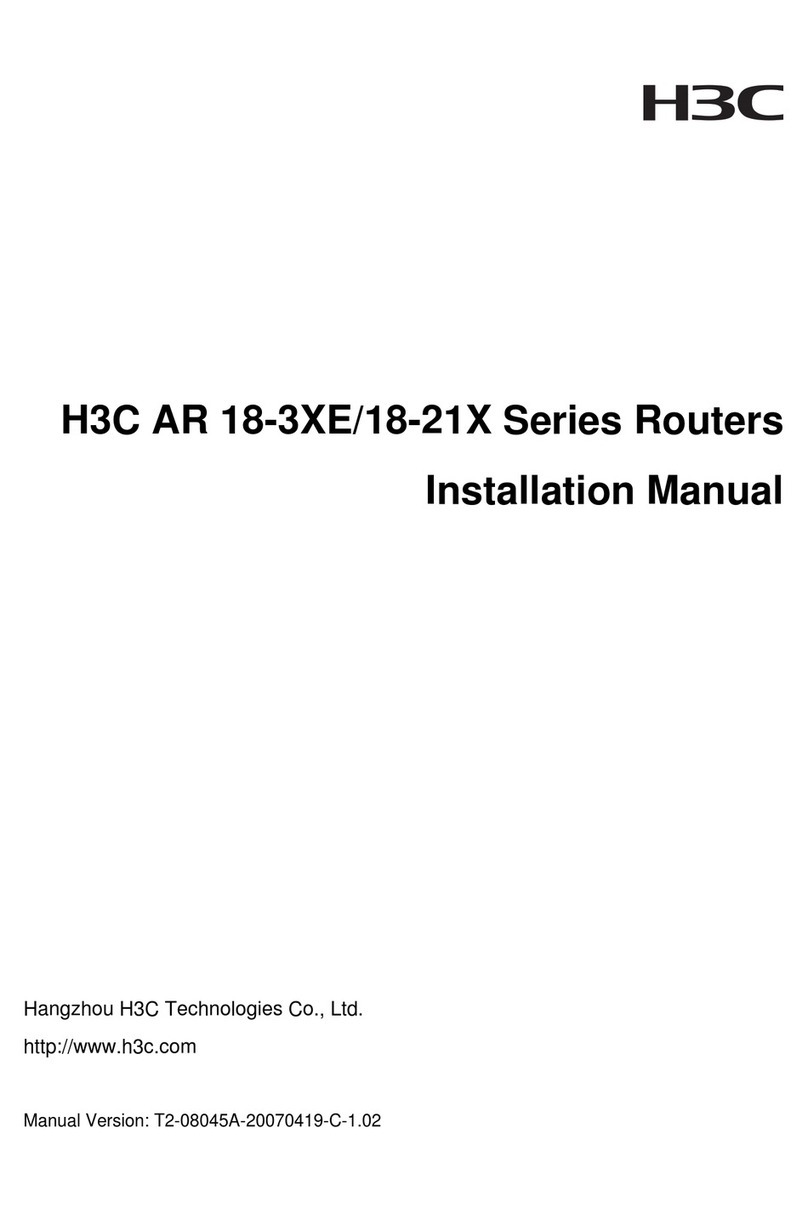
H3C
H3C AR 18-3XE/18-21X Series User manual

H3C
H3C WA6120H User manual
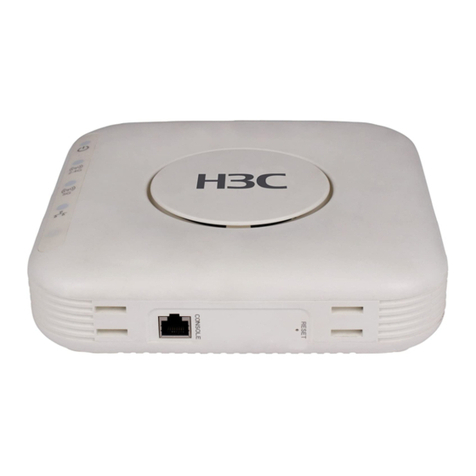
H3C
H3C WA2200 Series User manual
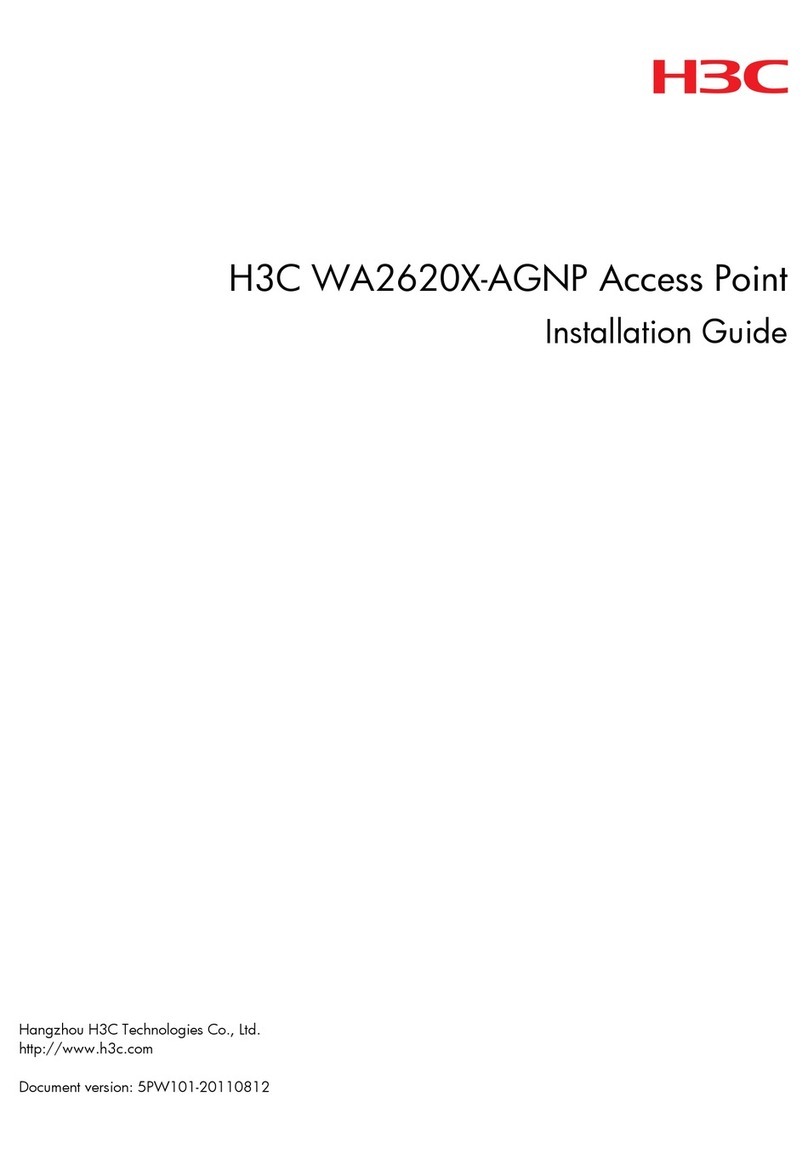
H3C
H3C WA2620X-AGNP User manual

H3C
H3C WA538 User manual
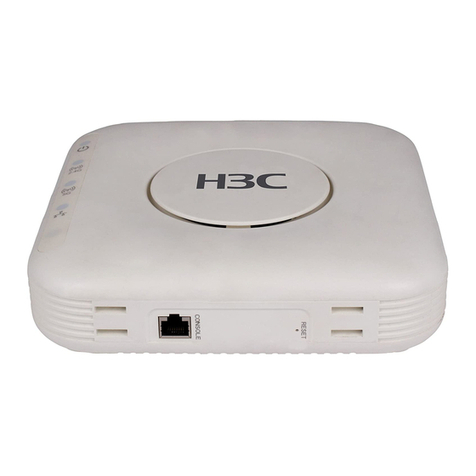
H3C
H3C WA2620i-AGN User manual
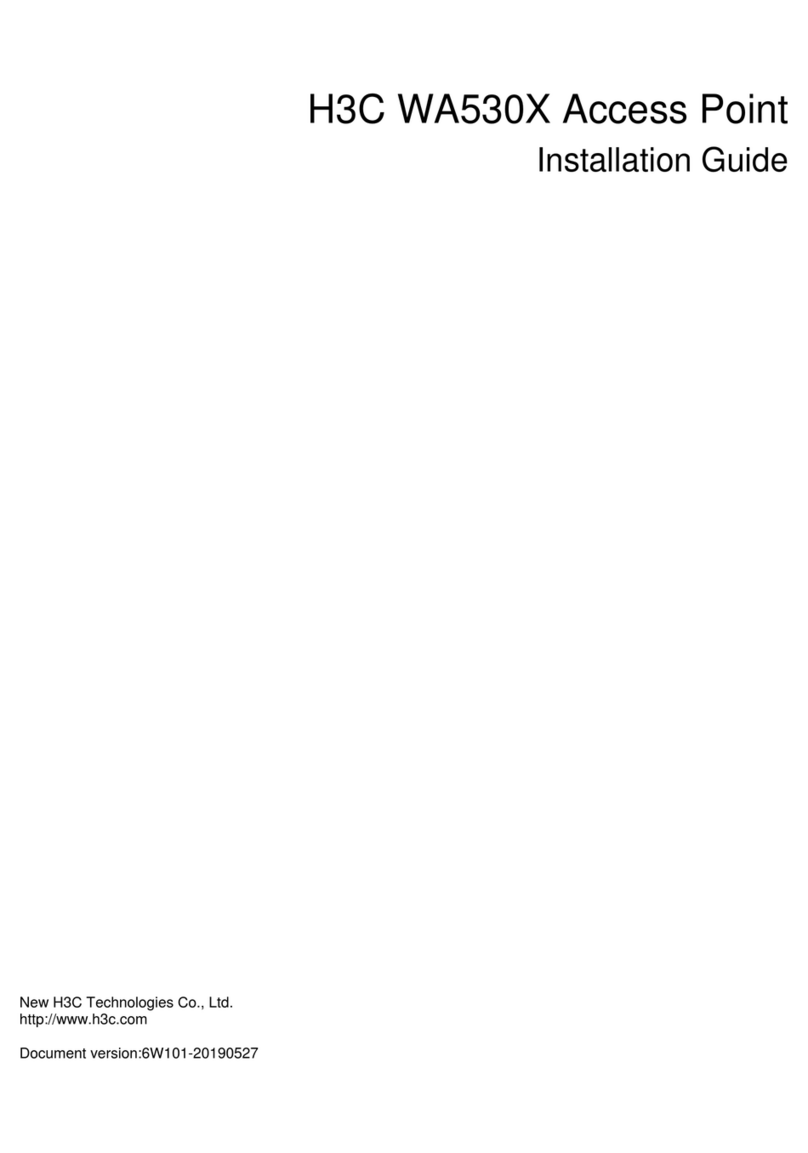
H3C
H3C WA530X User manual
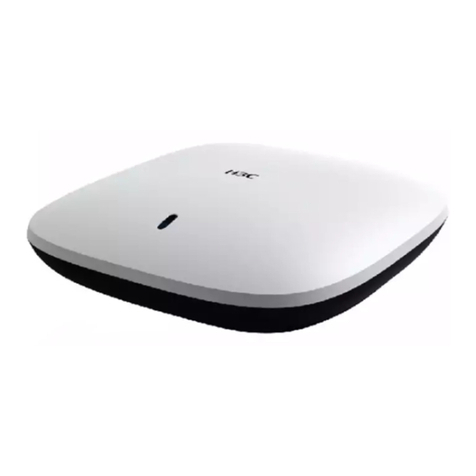
H3C
H3C WA4320i-ACN User manual
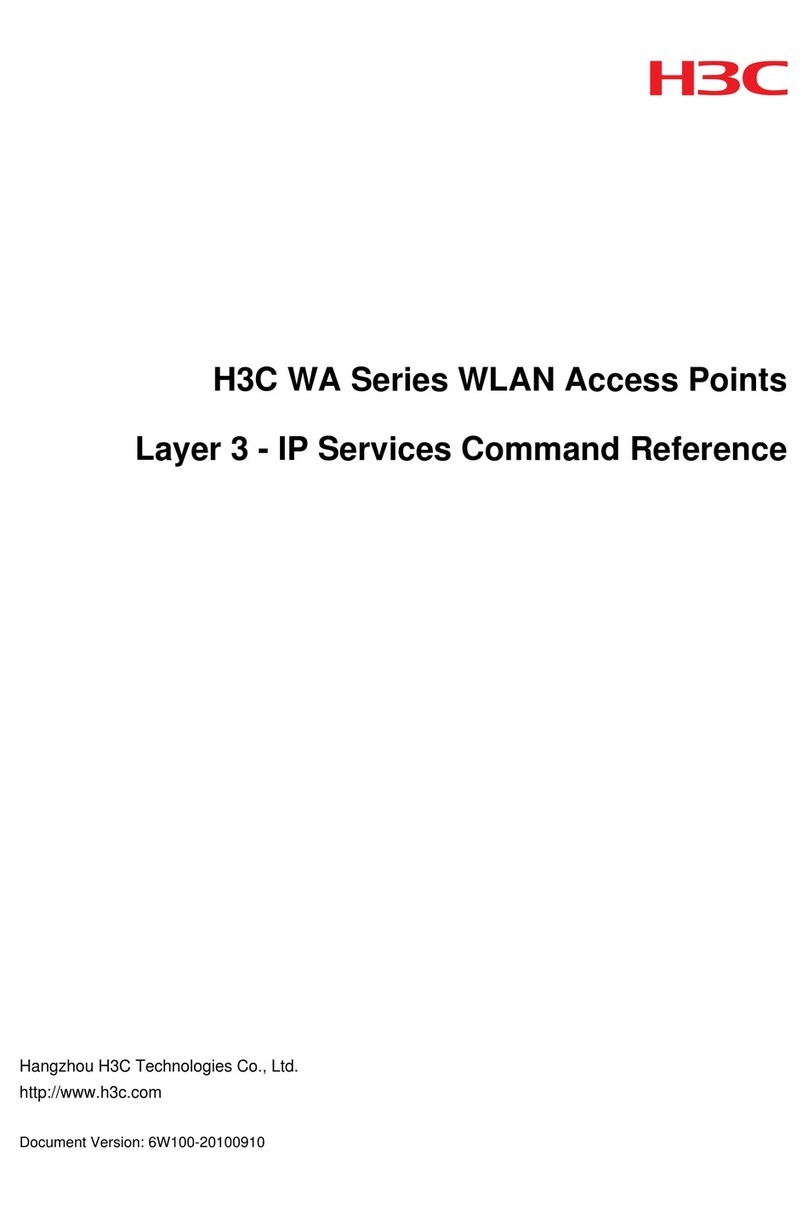
H3C
H3C WA2600 Series Installation manual

H3C
H3C WA510H User manual
